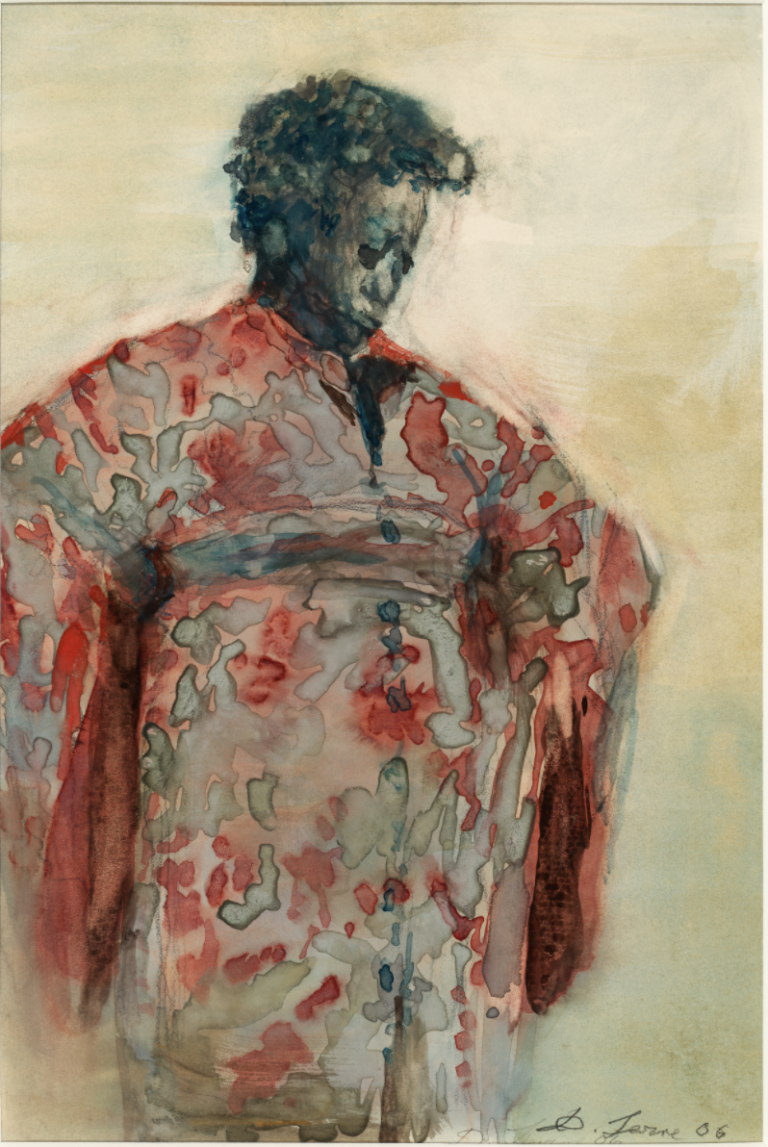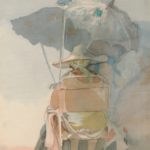















David Levine
1926 - 2009
“I see things generally, but only see the larger cavities of form. I don’t see the color of your eyes, I don’t see a lot of things that I really used to see much more clearly. So I’m finding it very difficult. I’m trying various things. Mostly I’m trying pencil.”
David Levine in a 2008 C-SPAN Interview
Biography
Born in Brooklyn, David Levine’s father ran a small clothing factory, and his mother was a nurse and political activist. After exhibiting precocious artistic talent as child, he went on to study painting at the Pratt Institute, at Temple University’s Tyler School of Art, and with Hans Hoffman at his school in New York. His studies at Tyler were interrupted by a stint in the U.S. Army. After his service, however, he returned to Temple and completed a degree in education, as well as his studies in art.
Levine was a masterful painter, breaking new ground in the field of watercolor, a medium he turned to after a large collection of his oil paintings were destroyed in a 1968 fire. Still, he is perhaps best-known for his literary and political caricatures, which appeared in every issue of the New York Review of Books from 1963 to 2007, and graced the pages and covers of such publications as Esquire, Time, Newsweek, the Nation, the New Yorker, the New York Times, and Rolling Stone Magazine, among others.
In addition to his work as a painter and illustrator, Levine mentored other artists at a weekly salon called the Painting Group, which he co-founded with fellow artist and friend Aaron Shikler in 1958.
His work is represented in the collections of the Metropolitan Museum of Art, Brooklyn Museum, Cleveland Museum of Art, Hirshhorn Museum and Sculpture Garden, National Portrait Gallery, and Library of Congress, among other institutions.
Levine’s Post-macular artwork
Levine’s late-life struggle with macular degeneration reached public attention when Vanity Fair published an article about the change in quality of his post–macular degeneration caricatures. Levine had been inextricably linked to the New York Review of Books from the time it started publication in 1963, and for the first time, the Review was rejecting his drawings. Levine’s last drawing, of the novelist Howard Norman, appeared in the Review in April 2007, by which point he was no longer getting assignments.
At the same time as the Vanity Fair article appeared, C-SPAN aired a video interview with Levine to mark the release of his book American Presidents. Midway through, Levine held a pen to demonstrate how he used to work: brushing the empty quill across the paper, turning the paper as he did so, authority in every gesture—though what he drew was now in his head and didn’t appear on the page for viewers to see.
After his illustration career ended, he focused on painting from memory in the last few years of his life.
V&AP Resources Related to This Artist

Feature Article
Rendering the Essence
When, due to macular degeneration, Levine could no longer create the caricatures for which he was renowned, he continued his life-long exploration […]
Read More
Feature Article
Haunted: Images of Blindness Plague Artists with Vision Loss
Western art—and artists—are haunted by negative representations of blindness.
Read More
Feature Article
Lessons in Creativity from Artists with Macular Degeneration
Eight artists from one generation and how they continued making art after vision loss due to macular degeneration.
Read More











